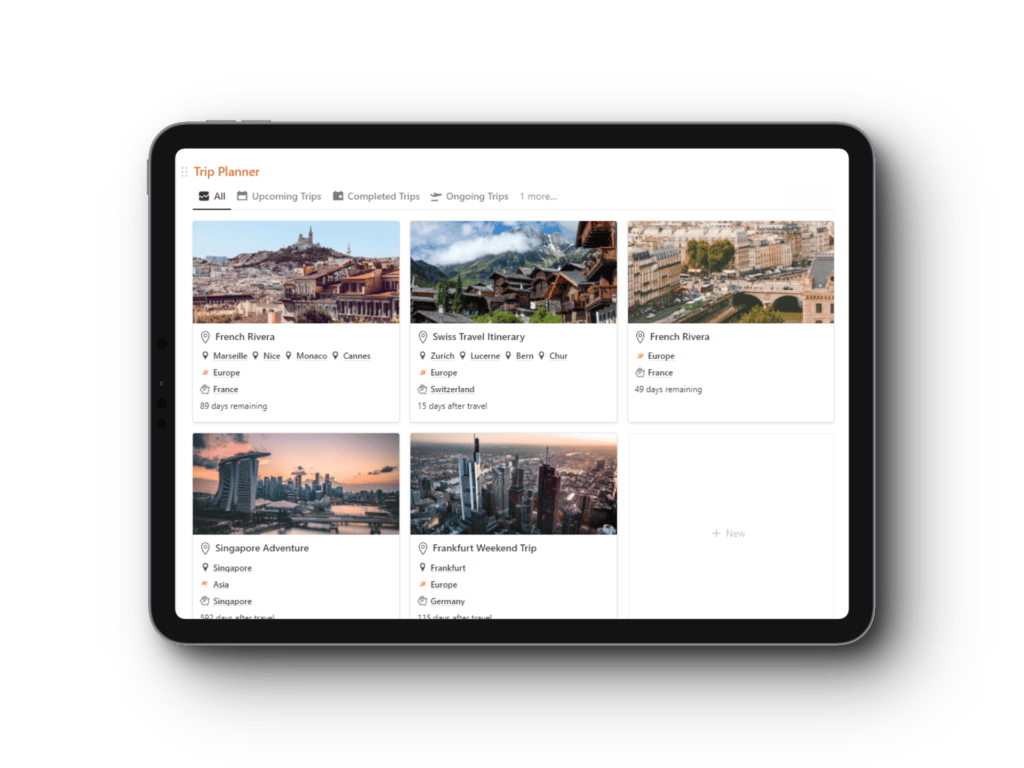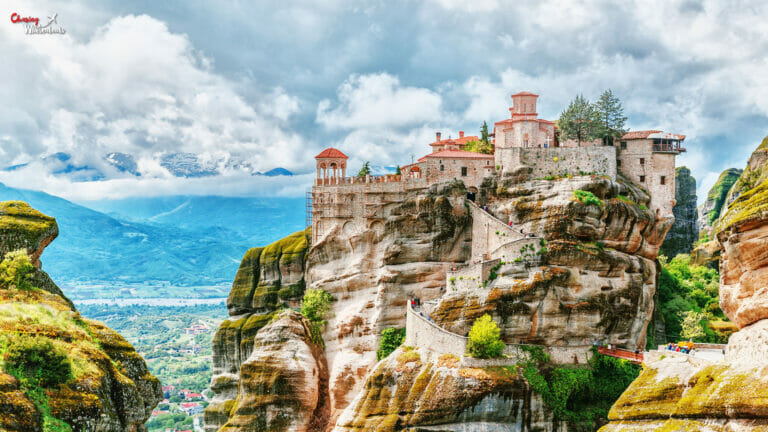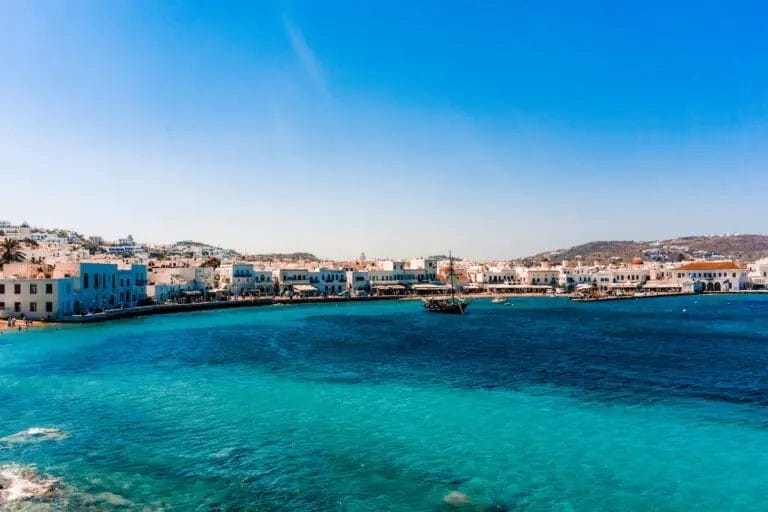35 Absolute Best Things to do in Athens
During summer we decided to visit Athens and we absolutely enjoyed our three days in Athens. In this post, we will be covering all the best things to do in Athens so stay tuned.
There are so many exciting things to do in Athens, it can be hard to decide what to do. Athens is an iconic destination, steeped in ancient history and filled with delicious food options.
This list will help you decide what things to do in Athens Greece during your time there – no matter how long your visit is. I’ve been to Athens recently and — this is definitely one of the best places to visit in Greece.
Read on to learn about the best things to do in Athens!
Note: this list of things to see in Athens has been updated in 2023 to reflect the current top things to do, the latest prices, the best tours and more. Enjoy your trip to Greece!
Yeah Yeah! Now you will this list has more than 30 best things to do, Well you are in luck we just tried to simplify the count. Also, important information, If you are looking for an option of travelling in Athens using public transport then you should read our Athens Transport Guide.
Climb to Acropolis
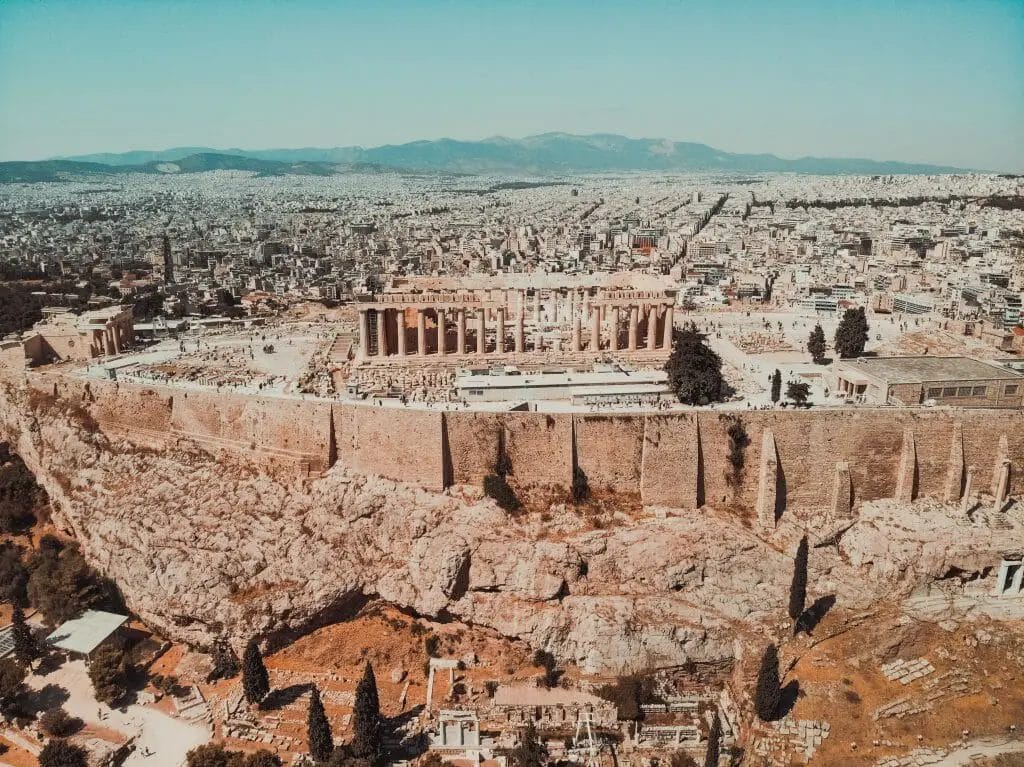
Seeing the 5th-century Acropolis is the most popular thing to do in Athens. Of course, this means that everyone wants to go there, including visitors from cruise ships. My advice is to get there early. The site opens at 8 am and the cruise ship passengers arrive around 10 am.
Most people visit the Acropolis to see the Parthenon but there are several other things to see on the hill, including the Erechtheion, the Arrhephorion, and the Temple of Athena Nike. From the Acropolis, you can see much of Athens and can see all the way to the sea. The entrance fee is €20 ($23.25) in summer and the cost changes during winter to half-price €10.
We would recommend you to pre-book your Acropolis Tickets to avoid any queue.
To learn about all of the incredible histories here, join a private walking tour. The tour will also take you to the museum (below). There are a few different types of tours you can take, click on one of the images below:
Parthenon
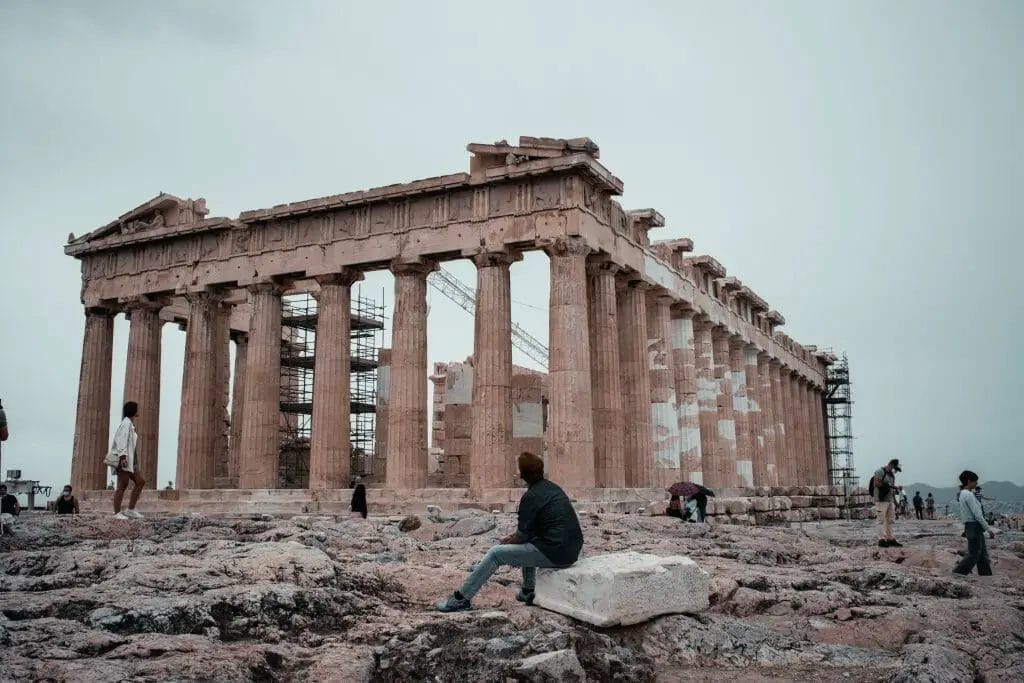
The Parthenon is a landmark of Western civilization and Athenian democracy and is considered the Doric Order’s greatest accomplishment and Classical Greece’s most important building to survive to the twenty-first century.
The Parthenon was built in 447 BC, when the Athenian Empire ruled the Aegean. It was dedicated to the goddess Athena.
It was a city treasury at the time, co-designed by Ictinus and Callicrates, before becoming a church in the 6th century and then a mosque in the 1460s.
Some of the Parthenon’s sculptures were infamously plucked by The Earl of Elgin at the beginning of the 18th century and later sold to the British Museum, where they still reside.
Odeon of Herodes Atticus
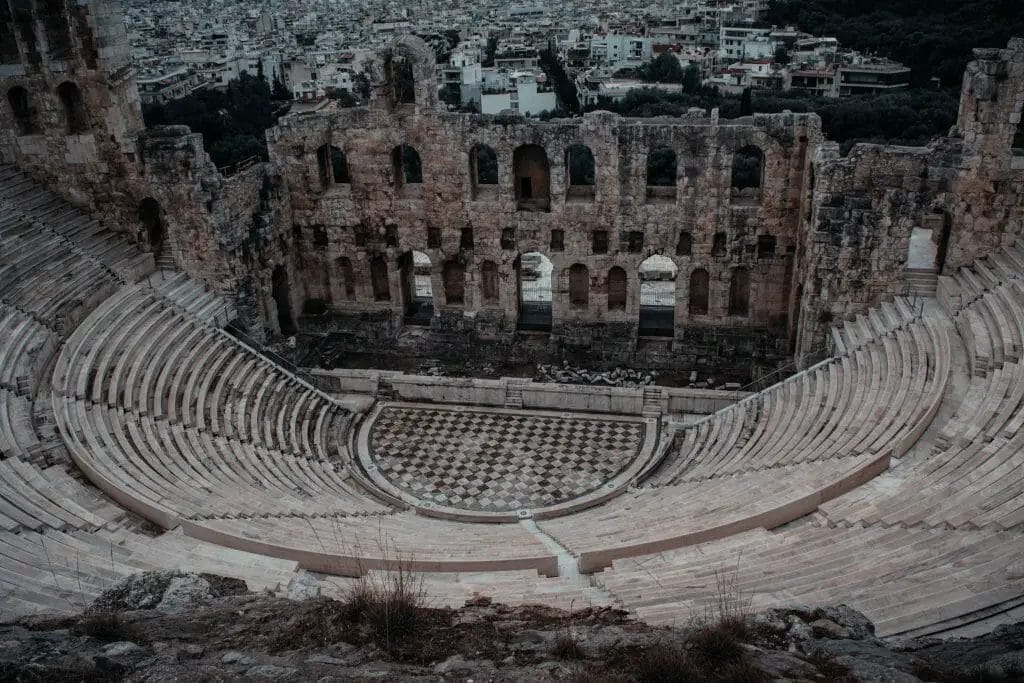
The Athenian Magnate Herodes Atticus ordered the construction of this Roman-era concert hall in 161 AD, most likely in memory of his wife Aspasia Annia Regilla.
It had a cedar wood roof at the time and could seat 5,000 people before it was destroyed by the Herules in 275. The monument faded into the earth over the next 1,700 years, and tourists in the Medieval era had no idea what the ruins meant.
In 1848, archaeologist Kyriakos Pittakis and man of letters Alexandros Rizos Rangavis conducted the first excavation, which was witnessed by Otto of Greece.
The stone levels of the theatre were reconstructed in the 1950s using the same marble from Mount Pentelicus.
To experience the Odeon as the Athenians would have done 2,000 years ago, purchase a ticket to an evening concert.
Theatre of Dionysus
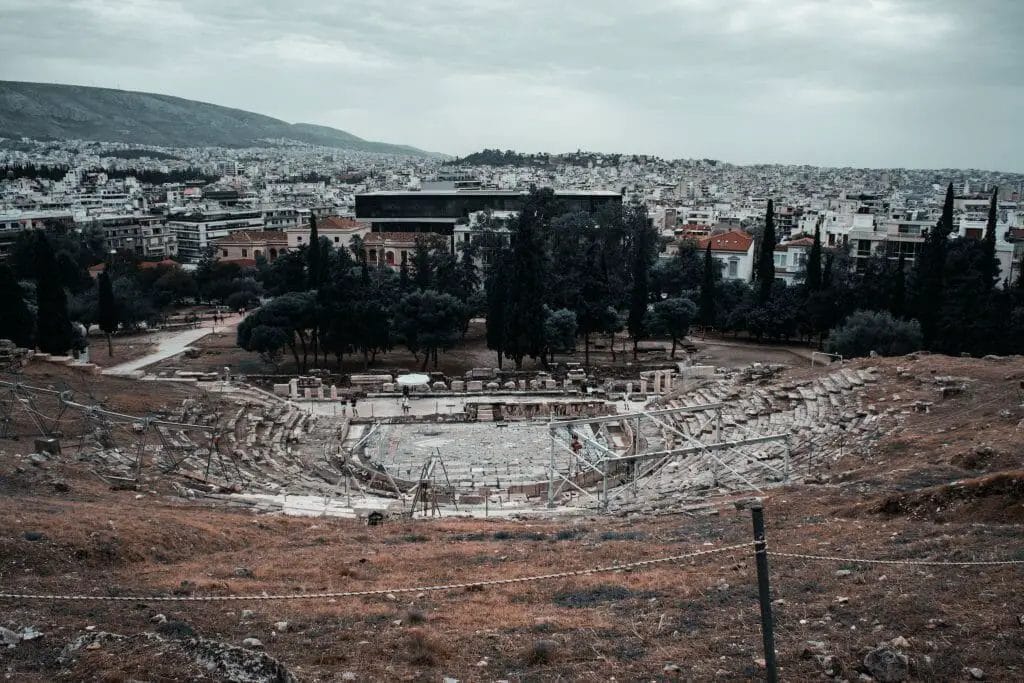
The Theatre of Dionysus, which first hosted performances in the 6th century BC, gave birth to European drama. It was the first theatre ever built, carved into the rocky southern slope of the Acropolis.
While several improvements were made later in the Roman era, the current design dates from the middle of the 4th century BC, when the statesman Lycurgus oversaw the city’s finances.
The Dionysia Festival, which was attended by dramatists such as Sophocles, Aeschylus, Euripides, Menander, and Aristophanes, was held at the Theatre of Dionysus.
It’s surreal to realize you’re standing on the same stage where all of the Classical masterworks were performed.
Erechtheion
A temple to Athena and Poseidon was constructed in the Ionic Order from 421 to 406 BC on the north side of the Acropolis. This monument saw a variety of uses after antiquity, including a Byzantine cathedral, a Frankish palace, and, much later, a residence for the Ottoman commander’s harem.
The southern Porch of the Maidens, which is the Erechtheion’s defining picture, is a must-see.
Callimachus or Alcamenes carved six magnificent caryatids to support the roof.
The latest caryatids are casts, with five of the originals on display at the Acropolis Museum and one at the British Museum.
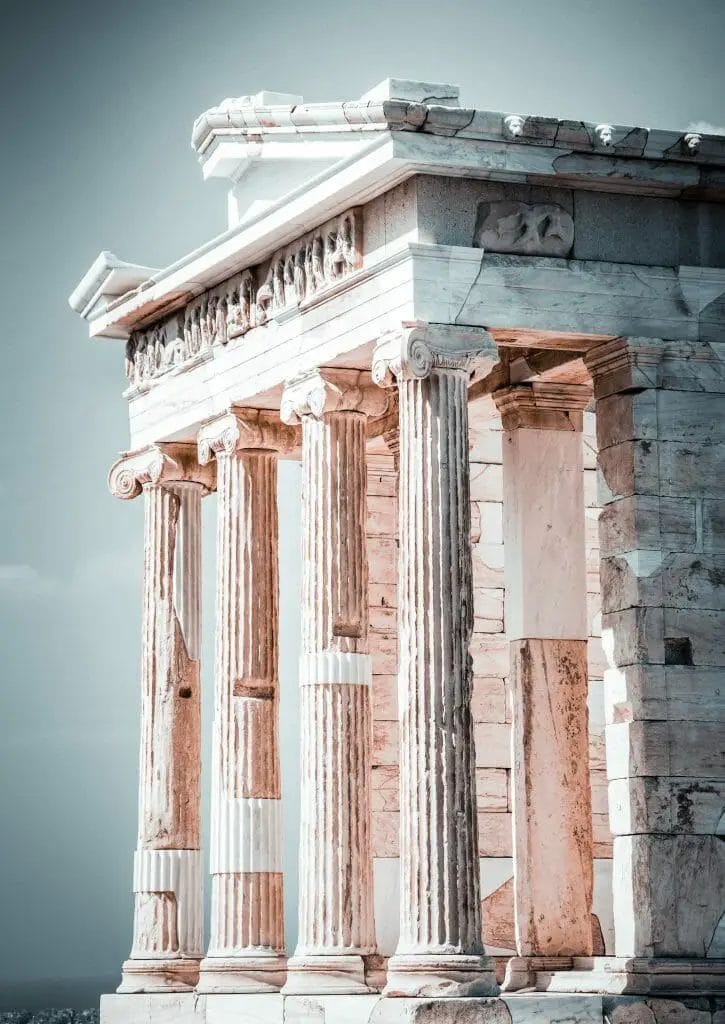
Temple of Athena Nike
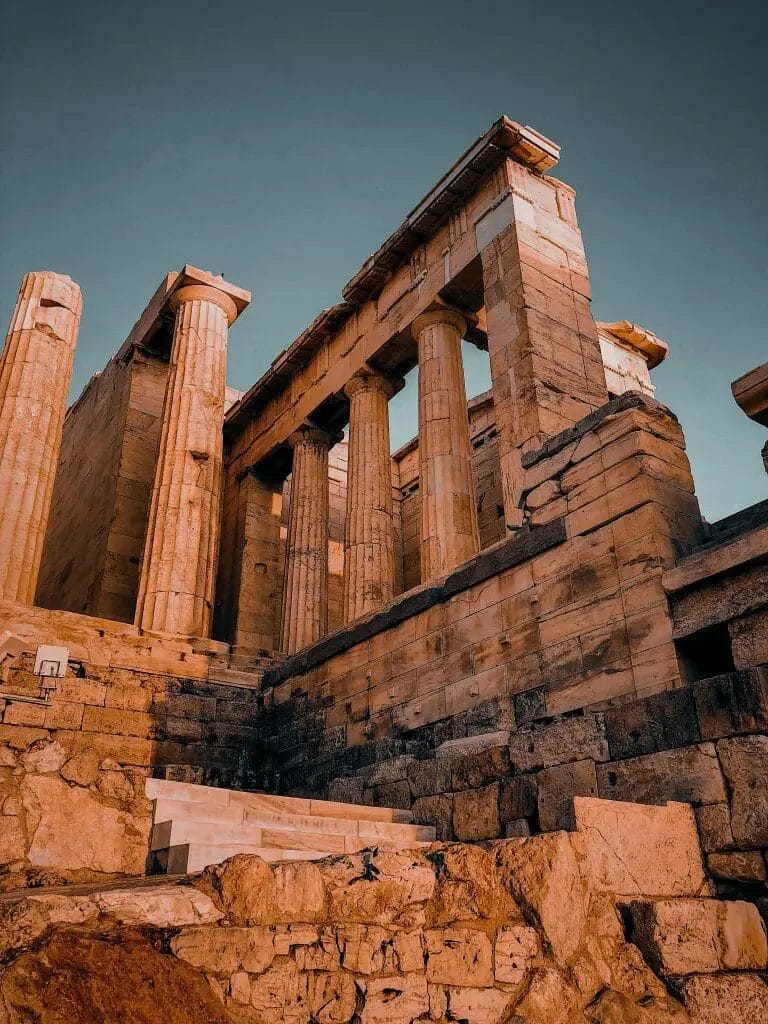
The Temple of Athena Nike, which dates from 420 BC and is located on a bastion on the southeast slope of the Acropolis, is the first fully Ionic Order temple on the hill.
It is the most recent of many temples dedicated to Athena Nike on the Acropolis; the first was demolished by the Persians in 480 BC. This tetrastyle Ionic temple was designed by Callicrates and features four elegantly narrow columns with Ionic volutes or scrolls on the front and back porticos.
The Acropolis Museum has fragments of the frieze and relief along the parapet below, including the exquisite wet drapery sculpture of the goddess repairing her sandal.
Visit the Acropolis Museum
The Acropolis Museum, designed by Swiss architect Bernard Tschumi, is located on the southeast slope and was opened in 2009 to display the several thousands of artifacts found on the Acropolis archaeological site.
The museum is constructed over ancient ruins and most of the ground floor has glass panels and open spaces, revealing the foundations below. It is cleverly oriented to offer you frequent views of the Parthenon.
Visitors are taken on a historical journey through the ages on three stages, beginning with archaic discoveries on the hill, which are displayed in a wide trapezoidal hall alongside findings from the Erechtheion, the Propylaea gateway, and the Temple of Athena Nike.
After that, you ascend to a hall of the same size, column spacing, and orientation as the temple to marvel at the marbles from the Parthenon’s frieze (including metopes) and pediments.
The tour then returns to Athens, passing through Roman and early Christian periods.
Philopappos Monument
Hill of the Muses, also known as Philopappos Hill, is a pine-clad elevation to the southwest of the acropolis.
Gaius Julius Antiochus Epiphanes Philopappos, a prince of the Kingdom of Commagene in the first and second centuries, was given that name.
His death in 116 is said to have caused great grief among Athenians, especially his sister Julia Balbilla, who erected a lasting monument in his honor.
The monument is two storeys high, with a frieze on the lower level depicting Philiopappos as a Roman consul, riding a chariot and flanked by lictors (bodyguards). Antiochus IV, the last King of Commagene, and Philoppapo, with an inscription in a niche beneath his portrait, are sculpted in the damaged upper portion.
Temple of Olympian Zeus
While not much of this temple east of the Acropolis has survived, what is left is more than enough to show that it was once massive.
The building of the Temple of Olympian Zeus began in the 6th century BC and was not finished until Emperor Hadrian’s reign in the 2nd century AD. The dominant order had changed to Corinthian at that time, and the 15 remaining columns of an initial 104 have scrolls and acanthus patterns.
The temple was demolished during the Herulian sack of Athens in 267, barely a century after it was completed, and its stone was quarried for use in other structures throughout the region.
Temple of Hephaestus
The Temple of Hephaestus, located atop the 65-meter Agoraios Kolonos hill on the northwest side of the Agora of Athens, is a Doric peripteral temple in incredible condition.
It was built in the second half of the 5th century BC, but completion was three decades delayed due to funds and labor being diverted to the Parthenon.
The temple, which was dedicated to Athena and Hephaestus, the ancient god of fire, metalworking, forges, sculpture, and stonemasonry, was built by Ictinus and features six fluted columns on the west side and thirteen on the north and south sides.
The Labour of Hercules on the meotopes on the east side, as well as the pronaos and opisthodomos, which depict Theseus with the Pallantides and the battle of Centaurs and Lapiths, are all sculpted elements.
Areopagus
Just northwest of the acropolis, there’s another hefty white outcrop among the pines and cypress trees.
From the Areopagus, you can see the Port of Piraeus, the Acropolis, and Athens’ Northern Quarters after taking care on the slick marble stairs.
And, as part of the Classical region, this rock has a lot of myths attached to it.
One is Ares’ trial for the assassination of Poseidon’s son Halirrhothius.
Before Ephialtes implemented reforms that deprived the city council of its control in the 5th century BC, Areopagus was the site of the city council.
It remained Athens’ chief murder court after that.
Kapnikarea
This 11th-century church on Ermou Street, Athens’ poshest commercial artery, is a pleasant complement to the Byzantine Museum.
Kapnikarea is one of the city’s oldest churches, having been consecrated around 1050. Kapnikarea was founded over an ancient Greek pagan temple, most likely dedicated to Demeter or Athena, as was the case with many early Christian churches.
The vibrant iconography in the interior was created by the painter Photis Kontoglou in the mid-twentieth century, but the church’s friezes and sculpted column capitals contain older decoration.
Ancient Agora of Athens
The Agora, which was used for trade and public meetings in Classical Athens, is protected to the southeast by the Acropolis and to the south by the Agoraios Kolonos hill.
It is a large site with the ruins of more than 30 buildings and monuments that was drawn up in the 6th century BC.
Download a map, take it slowly, and let your mind wander.
Alternatively, employ a guide to clarify the ancient rituals that once existed where you are now, such as ostracism, in which perceived threats to the state were driven into exile ahead of time.
Panathenaic Stadium
The Panathenaic Stadium, constructed for the 1896 Olympics, is a modern reconstruction of an ancient stadium built for the Panathenaic Games in 330 BC. The Athenian Roman senator Herodes Atticus would recreate the ancient monument in marble two hundred years later.
The Panethenaic Stadium, with its U-shaped form, is a near-exact copy of the 2nd century BC structure, and, like its forerunner, is entirely made of marble.
At the 2004 Athens Olympics, it hosted the archery competitions and served as the finish line for both the men’s and women’s marathons.
The stadium can accommodate 45,000 people and offers views of the Acropolis and the National Garden from the upper tiers.
Check out Hadrians Library
This library is not a library in the sense we know today, it was a place of study, not a place where books were lent. Hadrian’s Library was constructed around 132 AD for housing documents and reading rooms. There’s not much left but you can clearly see the layout of the library and there is excellent signage.
The entrance fee is €4. Hadrian’s Library is located in the Monastiraki neighborhood not far from the Acropolis.
Go To Edem Beach
Going to the beach is one of the lesser-known things to do in Athens, as most people believe that to enjoy some beach time, you must travel to the islands. While it isn’t one of Greece’s best beaches, it is still a wonderful place to unwind and enjoy the water.
If you want an umbrella or a towel, bring your own because none are available there. The Edem Taverna, which is situated on the beach, serves delicious food.
To get to Edem Beach, take the Green Line tram from Syntagma Square to Askllipiio Voulas and get off at the Edem station. The tram ticket is €4.50 for 24 hours, and the beach is free.
See The Decorations at Little KooK
On my most recent trip to Athens, I found Little KooK. It is decorated both inside and outside the restaurant during the holiday season. It was decorated for Halloween when I was there.
Little KooK is primarily a dessert cafe, but the decorations are the big draw. Apart from the Acropolis, this is possibly the most Instagrammable spot in Athens!
Take a Street Art Tour
In Athens, street art can be found in a variety of forms, ranging from traditional graffiti to contemporary street art. While much of it can be found on your own in Plaka, this tour is led by a street artist. The artist will show you both well-known works and latest additions to the collection.
Adults pay €40 ($47.00), children between the ages of 12 and 17 pay €30, children between the ages of 6 and 11 pay €20, and children under the age of 6 are eligible. The tour is 3 hours long. Prepare to take pictures with your camera or tablet. To learn more about this tour and to book a place, go here. Alternatively, you can click on the picture below:
Grab a Drink at A is For Athens’
For the best view of the Acropolis at night, you must have a speciality cocktail at A is For Athens cocktail bar. It’s one of the closest viewing points of the Acropolis. It’s actually a hotel, so you could stay here and see the Acropolis in the morning for breakfast as well!
The cocktails range from €12 to €20. They did not have any soda pop so don’t come here to order a rum and Coke. All of the cocktails have great names referencing Greek history and culture.
Visit the Benaki Museum
The Benaki Museum, which houses a near-complete chronology of Greek history and culture, was created in 1930 by art collector Antonis Benakis. He founded the institution in memory of his father, Emmanuel, a prominent politician who died the previous year.
You will trace the evolution of Greek art from prehistoric times to the present on three floors.
On the ground floor, there are Neolithic vases that are remarkably complex, as well as Archaic ceramics and figurines, and Classical sculpture.
The first floor, which contains religious icons and examples of folk costume, takes you through the late Byzantine era and Ottoman rule.
Then after the cafeteria on the 3rd, the top floor has paintings, documents and weapons from the Greek War of Independence against the Ottoman Empire from 1821 to 1829.
Drink a Greek Coffee
One of the must-do things in Athens is to try a freddo cappuccino. This is one of three traditional Greek coffees available, along with a frappe and a freddo espresso.
The frappe is made with instant coffee, water, and sugar, not like a Starbucks frappe (if you choose).
Espresso is topped with frothy milk in the freddo cappuccino.
The freddo espresso is simply espresso swirled over ice. Both of these coffees are high in caffeine, but since they are served cool, they are refreshing on a hot Athens day.
In Greece, coffee culture is very significant. Not only do locals drink coffee (hot or cold) often during the day, but tradition has it that reading the dregs of coffee left at the bottom of your cup will reveal your fortune.
Ask someone to teach you how to read your fortune the next time you’re done drinking your coffee in Athens!
Visit the Museum of Cycladic Art
One of the most comprehensive private collections of Cycladic art is housed at the Museum of Cycladic Art. If you aren’t planning on visiting any of the Cycladic islands during your trip to Greece, this is a must-see.
Bottles, covers, and standards make up the majority of the items on display. There are also several metal artifacts. The marble pieces are mainly white, which makes them breathtaking in their simplicity.
This Athens museum is open Monday through Wednesday, Friday, and Saturday from 10:00 a.m. to 17:00 p.m., Thursday from 10:00 a.m. to 20:00 p.m., and Sunday from 11:00 a.m. to 17:00 p.m. On Tuesdays, the museum is closed. The admission fee is €7.
Shop in the Plaka
Plaka, on top of ancient Athens’ residential quarters in the shadow of the Acropolis, is an alternative to both the quiet ancient temples and the traffic-heavy modern capital.
In the summer, it’s a district of narrow, winding alleys lined with 19th-century facades adorned with flowering bougainvillea.
Plaka is teeming with family-run businesses, each offering something unique, from ceramics to musical instruments to handcrafted jewelry to specialty food stores piled high with olives and spices.
Plaka is a go-to for dining and nightlife, whether you want to grab a gyro or sit down to a meze.
Anafiotika, a steep whitewashed neighbourhood beneath the rocky north-eastern slope of the Acropolis, was built during the 19th-century reign of Otto of Greece, when workers came here to renovate King Othon’s Palace.
Psiri
While Plaka is known for sightseeing and shopping, Psiri has established itself as Athens’ best nightlife district, with streets packed with revelers until dawn on weekends.
Psiri wasn’t always a welcoming place for visitors, as the city had a fearsome reputation from the founding of the modern Greek state in 1828 to the 1990s.
It was the haunt of Koutsavakides, a rule unto themselves in the 19th century, with long moustaches, coats down to their knees (to hide their guns), and high-heeled pointed boots.
Psiri’s edges have been rounded off over the last 20 years, and there is an endless selection of music tavernas, pubs, restaurants, cafes, and nightclubs to fit all tastes.
National Garden
The National Garden, located between Psiri and Plaka, provides a welcome green buffer between ancient Athens and the urban sea of concrete.
The National Garden was formerly the Royal Garden, which opened to the south of the Old Royal Palace at the end of the 1830s and was ordered by Amalia of Oldenburg.
Bring the kids to the two ponds to see the turtles and ducks and relax for a few minutes under the pergolas and avenue of tall palm trees.
The park also has a botanical museum and a small zoo with peacocks, birds of prey, bears, and monkeys.
And, given that this is Athens, don’t be shocked if you come across any remnants of the ancient city, such as mosaics and columns.
Watch the Changing of The Guard
A cenotaph for all Greek soldiers who have died in battle is located underneath the facade of the Old Royal Palace on Syntagma Square.
The monument was sculpted in the early 1930s, combining French Empire style with Athens’ own ancient architecture, as well as modern Art Deco, which can be seen in particular in the relief.
The Presidential Guard’s Evzones (elite infantry) keep watch over the tomb, and a small changing of the guard ceremony takes place every hour on the hour.
Inscriptions commemorate conflicts from the First and Second Balkan Wars, the Greco-Turkish War, the First World War, and the Second World War on the steps and walls flanking the memorial.
Visit Monastiraki Square
If you sit long enough in Monastiraki Square, I swear you’ll see everyone in Athens pass by. This is where you can see visitors and locals interacting.
It is also a historic site, with a 9th-century church, a 19th-century mosque, and antiques discovered during the construction of the metro station. This is one of Athens’ busiest areas, and relaxing here is one of the best things to do in the city.
Eat Loukoumades
Loukoumades are a type of Greek doughnut. It’s a tiny puff pastry dipped in honey and dusted with cinnamon. I once had one with sesame seeds as well. They’re fantastic!
The best loukoumades in Athens can be found at the appropriately called Lukumades. Since O Thanasis is close by, you can have a donut for dessert after your kebab!
Watch the Sunset/Sunrise at Lycabettus Hill
Mount Lycabettus, unlike Athens’ most popular summit, is free to ascend on foot, but you can also take a funicular to the top.
This cretaceous limestone peak rises to 300 meters northeast of the city center, and its lower slopes are covered in pine trees, which grow sparser as you reach the rocky summit.
The walk is better done in the winter rather than during the hot summers in Athens, and the funicular runs every hour and half-hour.
The best panorama of the city awaits you at the top, where you can take your time to spot the Acropolis, the Temple of Olympian Zeus, the Piraeus Coast, and peaks such as Pentelicus, which provided marble for the Acropolis, and the soaring Parnitha in the distance.
Visit the National Archaeology Museum
The National Archaeology Museum has many artifacts ranging from prehistory to late antiquity. The artifacts are from all over Greece and the world. It also has an Egyptian collection.
The museum is north of the Acropolis. You can take the metro to Victoria station and walk from there. The entrance fee is €10.
Take a Walking Tour (one of the best things to do in Athens for foodies)
There is a multitude of walking tours to take in Athens. These are great if you want someone to give you the history and background of what you are seeing. If you do one that includes the Acropolis, they usually have a skip the line option which can be great if you are there in the summer.
But, not all the tours in Athens are about history. There is a food tour and a wine tour. The prices vary depending on the length and what is included and range from €39 to €500. Check out these highly-rated foodie tours in Athens:
Visit the Temple of Poseidon
This stunning ancient temple sits at the Aegean Sea and was built in the 5th-century. An inscription at the temple confirms that it was built for Poseidon. You should try to be here early in the morning or for sunset. You can sometimes see several islands on a clear day from the temple.
Technically this is a day trip from Athens as it’s 70kms south of the city. There is a bus from Athens from the Mavromateon Terminal and you can also get it from Syntagma Square. Look for the bus going to Sounio. The bus fare one-way is €6.90.
If you’d rather join a tour, check out this highly-rated half-day tour to Poseidon:
Stroll Through the Roman Agora
The Roman Agora is located right down the hill from the Acropolis. It was built as a marketplace after Athens became part of the Roman Empire in the 1st-century.
When I was there, it was very empty making a nice change from the crowds of the Acropolis. It’s a nice place to explore. However, there is not much signage so you may have to look things up after you go. The entrance fee is €6.
Explore the Athens Central Market
This is your typical outdoor market, complete with yelling vendors and all the associated odors. When I stayed in a hotel near the market, I discovered it. Even if you don’t buy something, the fruits in Greece look and smell beautiful, so it’s always a nice place to visit.
Another thing to keep in mind is that most of the vendors don’t speak English, so you can use sign language to point to things you’re interested in (or a translation app). If you’re staying in self-catering, there’s even meat and fish. This market was one of my favorites because it felt so authentically Greek.
Ready to Visit Athens?
As you can see there are so many things to do in Athens. You can even make a theme for each day you are there — exploring all the food options, seeing all the archaeology sites, and aimlessly exploring and seeing what you can discover! We planned our trip in a way that we mixed and matched things however we explicitly kept one day for the Temple of Poseidon reason being it is outside Athens and you have to travel to Sounion for that.
Have you been to Athens? What was your favourite thing to do while you were there?
Get your Notion Travel Planner Template!
Embark on your next adventure with the Wanderlust Planner, the ultimate Notion Travel Planner Template. Organize your wanderlust-fueled dreams and turn them into unforgettable journeys. Whether you’re a seasoned globetrotter or a newbie explorer, this template has you covered.

